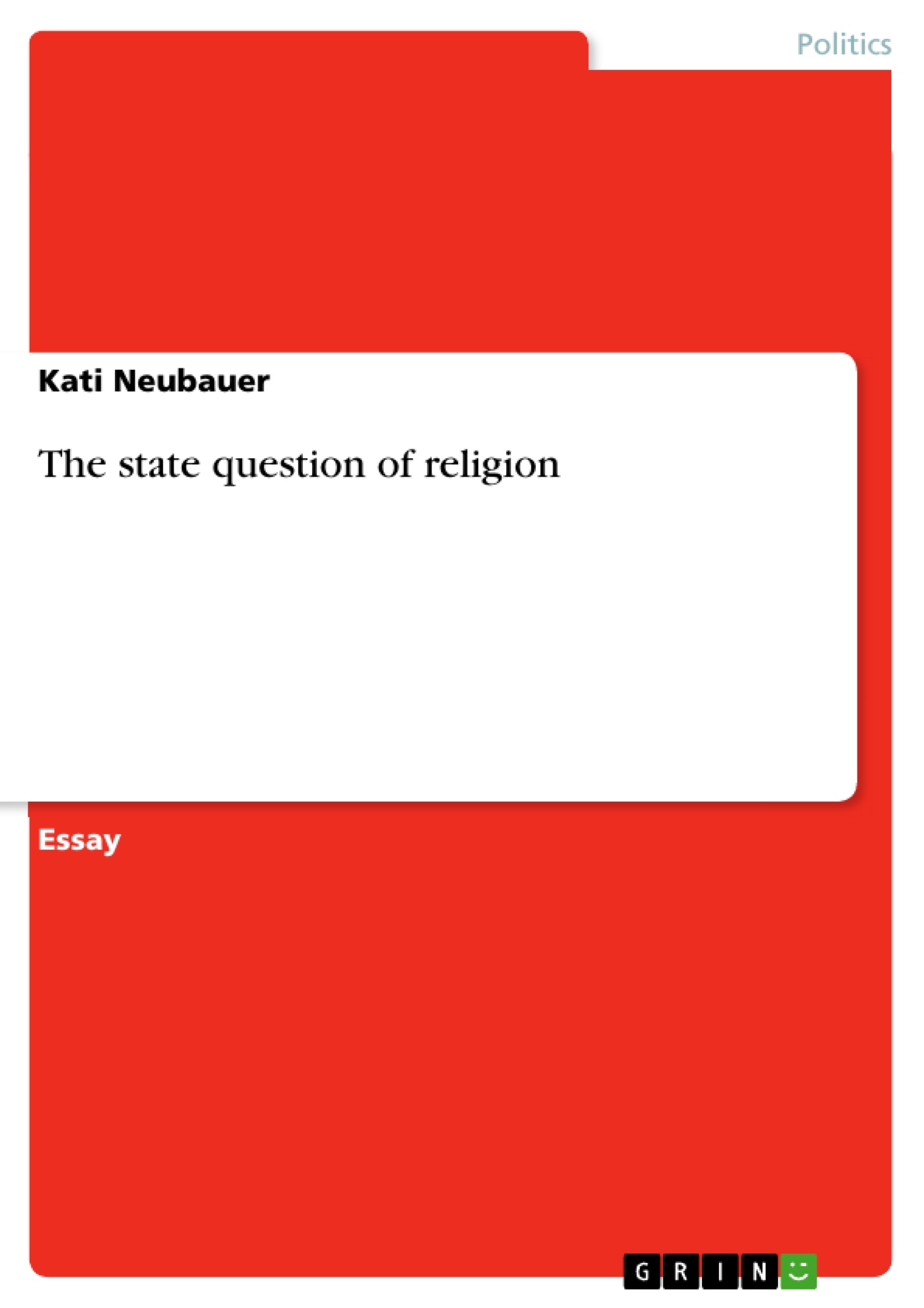In the modern Middle East, political questions often seem to be tied closely to religious concerns. This occurs especially in the development of independent states in the 20th century, when capable and strong governments had to be formed. The question how to in- or exclude religions from the government and political affairs is a hot topic, and displays a huge influence of religion even on the state structures. The essay does discuss what impact the question on religion has on certain modern Middle Eastern states. Therefore, a comparison between Iran, Israel, and Lebanon is made.
The state question of religion
In the modern Middle East, political questions often seem to be tied closely to religious concerns. This occurs especially in the development of independent states in the 20th century, when capable and strong governments had to be formed. In many cases, religion was represented as the linking source between the people, while other nations tried to minimize the influence of religious institutions by secularizing the state as it can be witnessed in Turkey. Nevertheless, the question how to in- or exclude religions from the government and political affairs is a hot topic, and displays a huge influence of religion even on the state structures. The following essay will discuss what impact the question on religion has on certain modern Middle Eastern states. Therefore, a comparison between Iran, Israel, and Lebanon will be made.
Under the rule of Mohammad Reza Shah, Iran made attempts to secularize by limiting the influence of religious groups, like the Shiite Ulema, and by bypassing the Muslim law shari’ah by secular laws.[1] While experiencing crisis, the citizens started loosing trust in the actions of the Shah and his politics of western style modernization, and turned more and more to religious groups to bring back traditional Islamic culture.[2] Experiencing pressure from banished religious figures, the government started a campaign against the exiled Shiite leader Ajatollah Ruhollah Musavi Khomeini in the state press. After revolting theology students, who defending Khomeini, were attacked by governmental forces, Iranians turned more intensely to religious groups in opposition to the state, and eventually carried out an Islamic revolution in 1978-1979 lead by religious figureheads, especially supported by Khomeini. After the revolution of the 1970s, the secularized government was replaced and a religious ruler ship was installed. The Shiite leader Khomeini returned from his exile in France and, in 1979, managed to replace the monarchy and establish the Islamic Republic.[3] This governmental system was based on the Muslim Shiite beliefs of the return of the 12th Imam, while the country was mainly ruled by his religious representative, the supreme Imam, who Khomeini claimed to be.[4] But still religious and secular groups were trying to win the upper hand, when the Council of the Islamic Republic, mainly composed by the Ulema, reached domination over the administrative and legislative state departments.[5] Religious judges were installed and attempts were made to gain power in the militant religious establishments carried out by the Ulema. The Islamic Republican Party (IRP) was founded and opposite groups were suppressed. Also, minorities such as Christians, Bahais, and Jews were fought by the new government. Through propaganda in the mosques, the Ulema achieved mass acceptance of the IRP and mobilized the urban and rural Muslim people political for the new Republic with religion as a vehicle. All secularized laws were replaced again by the shari’ah and carried out by religious authorities, while the new constitution was encouraged to be based “one hundred percent on Islam”[6]. Accordingly, the civil right was confirmed such as in gender questions; for example the right for divorce was taken way from women. Also, a dress code for women was released, which emphasized the head scarf and their right to participate in education was limited.[7] Furthermore, interest free banking according to Islamic law was established to carry out the claims of an Islamic nation in public life as well. Not all inhabitants agreed with the new state regulations or its religious interpretation, and often acts of rebellion could be witnessed. Furthermore, by announcing the raise of the universal Islamic order, Iran was isolated by other countries in the Middle East.
[...]
[1] Cleveland. William L.: A History of the Modern Middle East, Ed. 3, Westview press, Oxford 2004, p. 187.
[2] Cleveland. William L.: A History, p. 449.
[3] Cleveland. William L.: A History, p. 432.
[4] “The position was to be held by “an honest, virtuous, well- informed, courageous, efficient administrator and religious jurist” who would serve as a leader of the people in the absence of the Hidden Twelfth Imam.” Cleveland. William L.: A History, p. 433.
[5] Cleveland. William L.: A History, p. 431.
[6] Cleveland. William L.: A History, p. 432.
[7] Cleveland. William L.: A History, p. 437.
- Citar trabajo
- Kati Neubauer (Autor), 2008, The state question of religion, Múnich, GRIN Verlag, https://www.grin.com/document/133393




